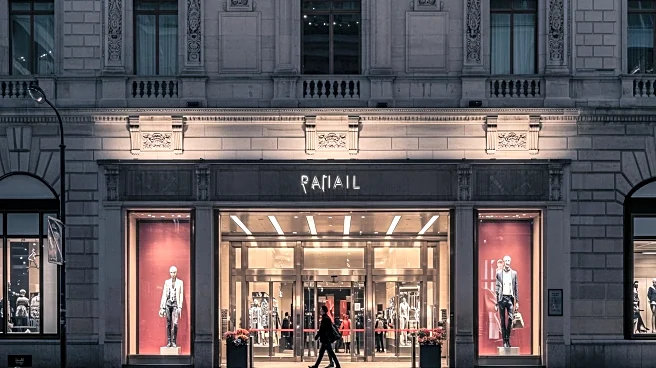What's Happening?
Dillard's has reported a 1% increase in total retail sales for the second quarter, reaching $1.4 billion, excluding its construction business. This marks a positive shift for the company, as store comparables also rose by 1%. However, the retail gross margin decreased to 38.1% from 39.1% the previous year, with a significant decline in women's apparel sales. Inventory levels increased by 2% compared to the previous year. Despite the sales growth, net income, which includes the construction unit, fell by 2.3% to $72.8 million. The company attributes its performance to strong merchandising and a regional store footprint, although it faces challenges such as consumer concerns over tariffs affecting prices.
Why It's Important?
Dillard's Q2 performance is significant as it surpasses analyst expectations, providing a glimmer of hope for the struggling department store sector. The results suggest that Dillard's may be better positioned than some of its peers due to its strategic focus on inventory control and merchandising. However, the decline in net income and gross margin highlights ongoing challenges in the retail environment, particularly in apparel sales. The company's ability to navigate these challenges could influence strategies across the department store industry, as others may look to emulate Dillard's approach to inventory and merchandising.
What's Next?
Dillard's future performance will likely be closely monitored by industry analysts and competitors. The company does not typically hold conference calls with analysts or provide guidance, which may limit immediate insights into its strategic plans. However, the ongoing impact of tariffs and consumer behavior will be critical factors in determining the company's trajectory. Other department stores may adjust their strategies based on Dillard's results, particularly in areas like inventory management and merchandising.
Beyond the Headlines
The broader implications of Dillard's performance could include a reevaluation of the department store model, especially in terms of regional presence and family control. The company's ability to maintain sales growth amidst a challenging retail environment may prompt discussions on the sustainability of traditional department stores and their adaptation to changing consumer preferences.

